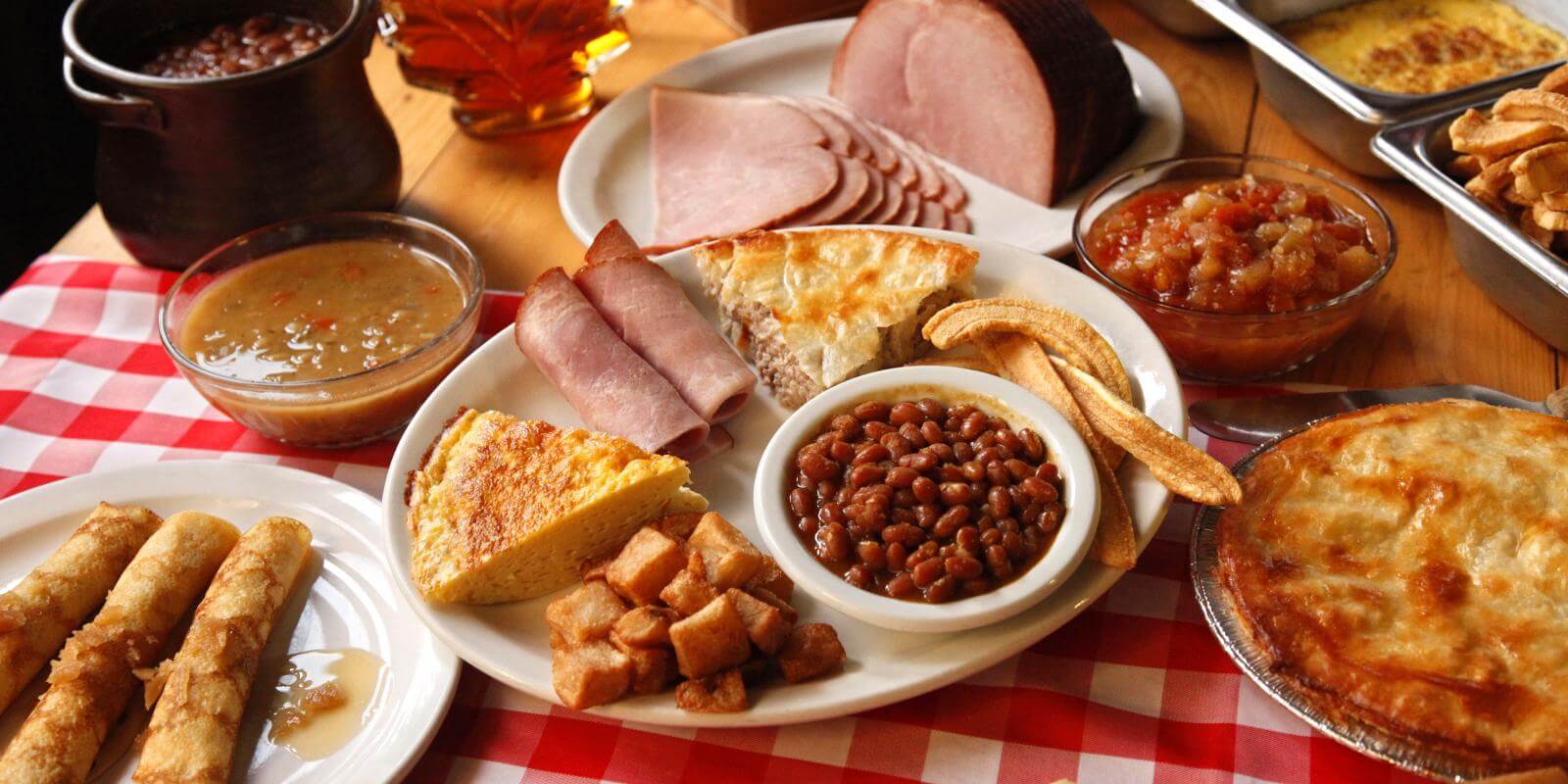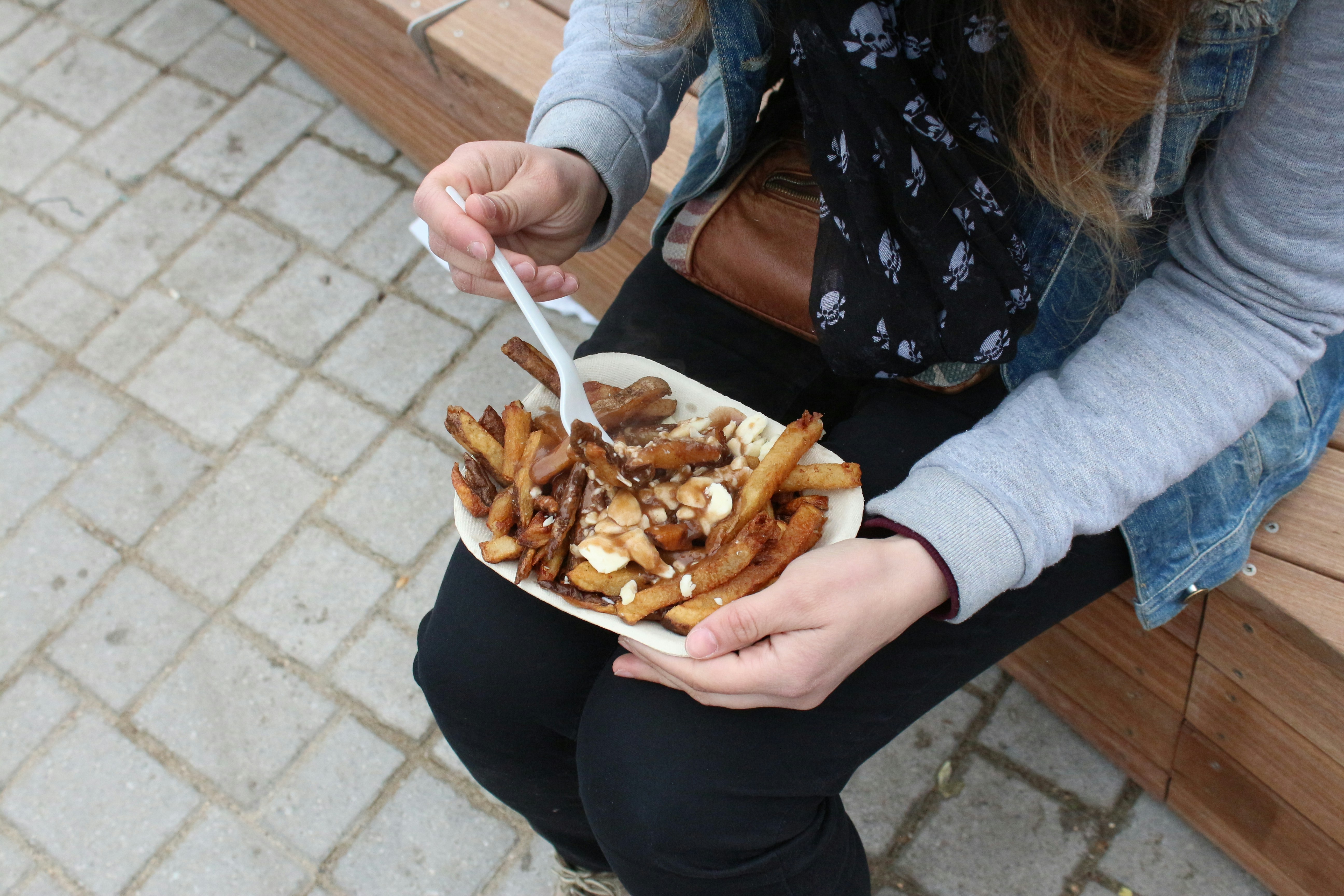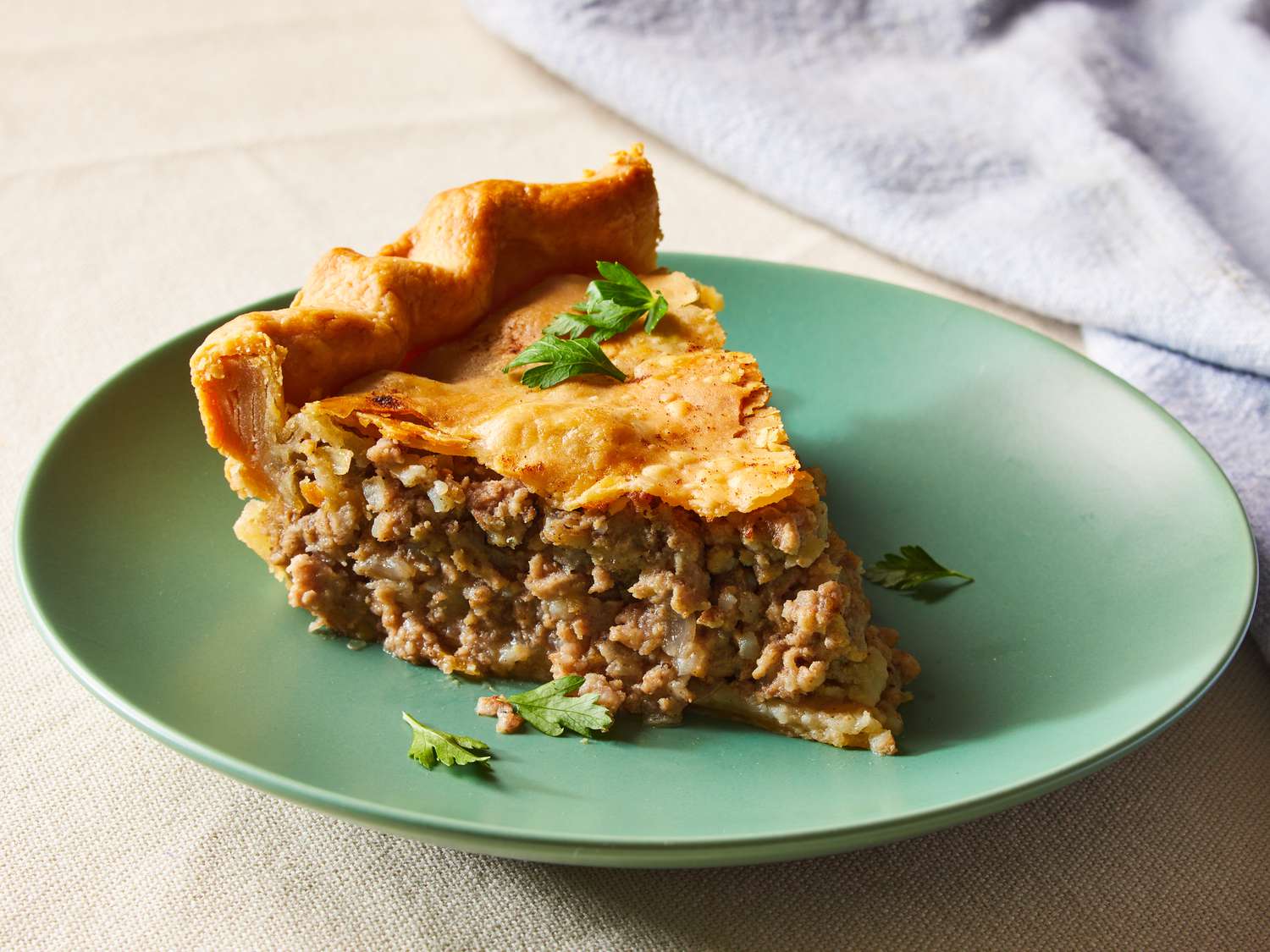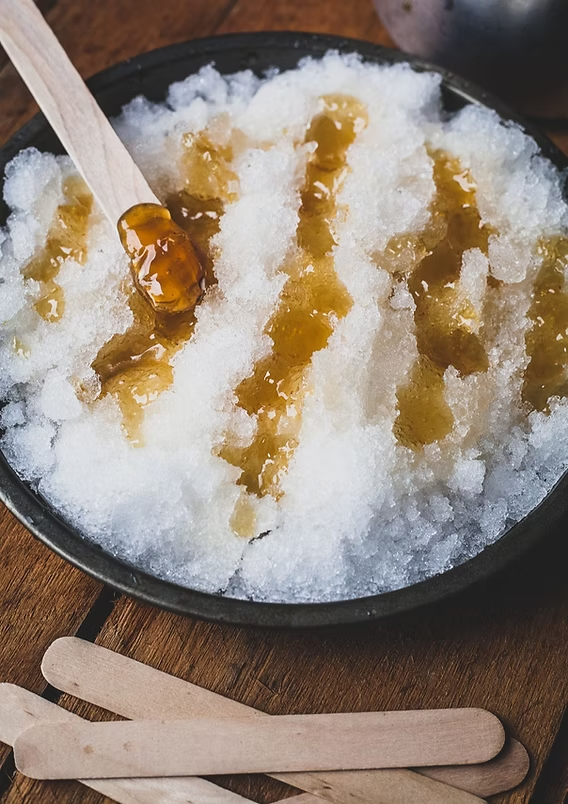
Exploring Quebec's French-Canadian Cuisine: Poutine, Tourtière, and Sugar Shacks
What's in This Article
- The Cultural and Historical Context of Quebec's Cuisine
- Poutine: Quebec's Most Iconic Dish
- Tourtière: The Traditional Meat Pie
- Sugar Shacks: Celebrating Quebec's Maple Syrup Tradition
- Other Classic Quebec Dishes
- Dining Culture and Modern Influences in Quebec Cuisine
- Tips for Travelers: Experiencing Quebec's Cuisine
- Frequently Asked Questions
Quebec, Canada's largest French-speaking province, is a region rich in culture, history, and culinary traditions. French-Canadian cuisine, deeply influenced by both French and Indigenous cultures, is a reflection of the province's rustic roots and hearty ingredients, perfect for the long, cold winters. Quebec's food is not just about eating; it's about celebrating heritage, family, and the land. In this post, we'll dive into the iconic dishes of Quebec, such as poutine and tourtière, and explore the unique experience of sugar shacks, all of which define this region's flavorful culinary landscape.

Quebec's winter landscape provides the perfect backdrop for its hearty cuisine
The Cultural and Historical Context of Quebec's Cuisine
The cuisine of Quebec evolved through centuries of resourcefulness, shaped by French settlers, Native peoples, and the harsh climate. Early French colonists in the 17th and 18th centuries relied heavily on locally available ingredients like game, fish, root vegetables, and maple syrup, while adapting French cooking techniques to their new environment. Native traditions, such as preserving meat through smoking or drying, also played a crucial role in shaping French-Canadian food.
As the population grew and expanded throughout the province, the food of Quebec came to reflect both rural life and urban influences, with some dishes remaining firmly tied to the rustic, farm-to-table roots of Quebecois heritage. Many of Quebec's iconic dishes have become emblematic of its cultural identity, celebrating the province's agricultural bounty, forest harvests, and culinary creativity.
Today, these traditions are preserved by passionate chefs at renowned restaurants like Au Pied de Cochon, where chef Martin Picard celebrates Quebec's culinary heritage with rich, indulgent dishes that showcase local ingredients.
Poutine: Quebec's Most Iconic Dish
Origins and Evolution
No discussion of Quebec cuisine is complete without mentioning poutine, the quintessential Quebecois comfort food. Poutine is a humble yet indulgent dish that consists of crispy French fries topped with squeaky cheese curds and smothered in rich, savory gravy.
Poutine was created in rural Quebec in the late 1950s and quickly became a cultural symbol across the province and, later, all of Canada. Though its exact origins are debated, most agree that the dish was first served in small roadside diners or snack bars (known as casse-croûtes), where customers asked for cheese curds to be added to their fries. Over time, gravy was introduced to complete the dish, and poutine as we know it was born.
Variations of Poutine
While the traditional version of poutine is the most beloved, variations have exploded in recent years as chefs experiment with creative toppings and flavor combinations. Some popular variations include:
- Poutine Italienne: Poutine topped with Bolognese sauce instead of gravy.
- Smoked Meat Poutine: Adding Montreal-style smoked meat (similar to pastrami) on top of the classic combination.
- Foie Gras Poutine: A gourmet twist with the addition of seared foie gras for a luxurious flavor.
- Pulled Pork Poutine: Topped with tender pulled pork and sometimes BBQ sauce for a Southern-inspired twist.
Poutine is a true reflection of Quebec's love for hearty, satisfying food that brings comfort and warmth, particularly during the cold winter months. For those looking to experience authentic poutine in Quebec, La Banquise in Montreal is a must-visit destination, offering over 30 varieties of this iconic dish and serving customers 24 hours a day.

Authentic Quebec poutine featuring squeaky cheese curds and savory gravy
Tourtière: The Traditional Meat Pie
Regional Variations
Tourtière is a traditional French-Canadian meat pie, often enjoyed during the holiday season, especially at Christmas and New Year's Eve. This savory dish is an essential part of Quebec's culinary heritage, dating back to the early French settlers who brought their pie-making traditions with them.
While the basics of tourtière involve a flaky, buttery crust filled with seasoned ground meat, the specific ingredients can vary depending on the region or family recipe:
- Québec City Style: Usually made with ground pork or a mixture of pork and beef, and seasoned with spices like cinnamon, cloves, and allspice.
- Saguenay–Lac-Saint-Jean Style: A deeper pie made with cubes of meat (often a mixture of game meats like venison, pork, and beef) and potatoes, cooked slowly in the oven.
- Modern Variations: Some cooks today experiment with fillings like turkey, chicken, or even vegetarian versions using lentils and mushrooms.
Tourtière is traditionally served with pickles, ketchup, or fruit chutney to balance the richness of the pie. It's a perfect example of Quebec's ability to transform simple ingredients into a deeply flavorful and hearty meal. For a gourmet interpretation of this classic dish, visitors to Montreal should not miss Joe Beef, where chefs David McMillan and Frédéric Morin often feature seasonal variations of tourtière that honor traditional techniques while incorporating innovative elements.

A slice of traditional tourtière showing the spiced meat filling and flaky crust
Sugar Shacks: Celebrating Quebec's Maple Syrup Tradition
The Sugar Shack Experience
One of Quebec's most cherished culinary traditions is the sugar shack (or cabane à sucre) experience. Located primarily in rural areas, these sugar shacks are where maple sap is harvested and boiled down to make maple syrup, a practice that has been carried out since Indigenous peoples first shared their techniques with French settlers.
The sugar season, or sugaring-off season, typically runs from late February to early April. During this time, Quebecois families and visitors flock to sugar shacks to enjoy a traditional meal and see how maple syrup is made. A typical sugar shack meal is served family-style and includes dishes that incorporate maple syrup in creative ways:
- Maple Ham: Thick slices of ham glazed with maple syrup.
- Baked Beans: Slow-cooked beans sweetened with maple syrup, adding a rich, smoky sweetness to this classic dish.
- Sausages and Eggs: Breakfast-style sausages and eggs served with a generous drizzle of maple syrup.
- Pouding Chômeur: A classic Quebecois dessert made with a simple cake batter that's topped with a boiling mixture of cream and maple syrup, creating a gooey, sticky dessert.
- Tire d'Érable (Maple Taffy): Hot maple syrup poured onto snow, where it solidifies into a sticky, chewy candy, traditionally eaten by wrapping it around a wooden stick.
A visit to a sugar shack is not just about the food, but also about the communal experience. Many sugar shacks offer sleigh rides, live music, and dancing, making it a true celebration of Quebec's culinary and cultural traditions.

The sugar shack experience includes maple taffy made by pouring hot syrup on fresh snow
Other Classic Quebec Dishes
Cipaille (Sea Pie)
Cipaille is a multi-layered meat pie that originates from Quebec's Gaspé Peninsula. The name comes from the English term 'sea pie,' as it was originally made with a mixture of meats, including wild game, pork, beef, and poultry, sometimes even fish. Cipaille is slow-cooked in a deep dish with layers of pastry, making it a rich and hearty meal.
Tarte au Sucre (Sugar Pie)
Tarte au Sucre is a traditional Quebec dessert that highlights the region's most famous ingredient: maple syrup. This sweet pie features a filling made from maple syrup, cream, and brown sugar, all encased in a flaky pastry crust. The result is a decadently sweet, gooey pie that's perfect for anyone with a sweet tooth.
Pâté Chinois
Despite its name, pâté chinois (literally Chinese pie) has little to do with Chinese cuisine. It's Quebec's version of shepherd's pie, consisting of layers of seasoned ground beef, corn, and mashed potatoes. It's a simple, homey dish that speaks to the resourcefulness of rural Quebecois cooks.
Dining Culture and Modern Influences in Quebec Cuisine
Quebec's dining culture is shaped by a love of rich, satisfying food, often shared in large family-style gatherings. Meals are leisurely and celebratory, with a strong emphasis on local, seasonal ingredients, especially in rural areas. The farm-to-table movement has also gained momentum in recent years, with many chefs highlighting the province's bountiful produce, cheeses, and meats.
Quebec's culinary scene has also embraced modern and international influences, with chefs across the province blending traditional Quebecois ingredients with techniques and flavors from around the world. Restaurants in Montreal, Quebec City, and beyond are taking Quebec's classic dishes to new heights by incorporating fusion elements, such as:
- Maple-Glazed Duck: Using local duck paired with a refined maple syrup glaze for a modern take on regional ingredients.
- Poutine with Global Flavors: Innovative poutine variations, such as kimchi poutine, butter chicken poutine, or truffle poutine, showcase the flexibility of this classic dish.
For those looking to experience the intersection of traditional and modern Quebec cuisine, Le Trou du Diable Brewery & Shop in Shawinigan offers a unique culinary destination where visitors can enjoy innovative dishes paired with exceptional craft beers, all celebrating the flavors and ingredients of Quebec.
Tips for Travelers: Experiencing Quebec's Cuisine
If you're planning to explore Quebec's culinary offerings, here are a few tips to help you make the most of your experience:
- Visit a Sugar Shack: The sugaring-off season is a must-visit if you're in Quebec in the spring. Not only will you enjoy traditional maple syrup dishes, but the experience itself is an integral part of Quebecois culture.
- Try Local Specialties: Don't miss out on trying tourtière, poutine, and tarte au sucre, all of which are widely available in Quebec's restaurants and cafés.
- Explore Farmers' Markets: Quebec's farmers' markets are full of local cheeses, charcuterie, and seasonal produce, perfect for sampling the region's bounty.
- Montreal and Quebec City Dining: While rural Quebec offers traditional experiences, the urban centers of Montreal and Quebec City have thriving food scenes with modern takes on Quebecois cuisine. Be sure to explore both Au Pied de Cochon for high-end traditional cuisine and La Banquise for the quintessential poutine experience.
Conclusion
Quebec's French-Canadian cuisine is a unique blend of rustic, hearty dishes that reflect the province's history and diverse cultural influences. From the iconic comfort of poutine to the rich, savory flavors of tourtière, Quebecois food celebrates the region's agricultural bounty and the creativity of its people. Whether you're indulging in a traditional sugar shack feast or exploring modern twists on classic dishes in Montreal, Quebec's culinary scene offers a rich and rewarding experience for food lovers.
So, on your next trip to Quebec, be sure to take the time to savor the rich flavors and warm hospitality of this unique province. Quebec's cuisine isn't just about filling your stomach—it's about feeding your soul.
Frequently Asked Questions
The best time to visit a sugar shack (cabane à sucre) in Quebec is during the sugaring-off season, which typically runs from late February to early April. This is when maple trees are tapped and the sap is flowing, allowing visitors to experience the full maple syrup production process and enjoy traditional sugar shack meals.
Authentic Quebec cheese curds are special because of their freshness and distinctive 'squeak' when you bite into them. They're made daily and should be eaten the same day for the best texture. Unlike regular cheese, these curds don't undergo the aging process and maintain a springy, slightly rubbery texture that doesn't fully melt in the hot gravy, creating poutine's signature taste and mouthfeel.
Yes, many restaurants in Quebec now offer vegetarian adaptations of traditional dishes. You can find vegetarian poutine made with mushroom gravy, tourtière prepared with lentils, mushrooms or plant-based meat alternatives, and sugar shack menus with vegetarian options. Montreal and Quebec City have particularly good selections of restaurants that offer creative vegetarian takes on classic Quebecois cuisine.
Traditional tourtière is seasoned with a distinctive blend of warm spices, typically including cinnamon, cloves, allspice, and nutmeg. Some recipes also include savory herbs like thyme and sage. The exact spice mixture varies by region and family tradition, with some recipes being more heavily spiced than others. These aromatic spices give tourtière its characteristic holiday flavor profile that distinguishes it from other meat pies.
For authentic Quebec cuisine, consider visiting Au Pied de Cochon for high-end traditional dishes like sugar shack-inspired meals and foie gras poutine, Joe Beef for excellent tourtière and seasonal Quebec specialties, or La Banquise for the ultimate poutine experience with dozens of variations available 24/7.